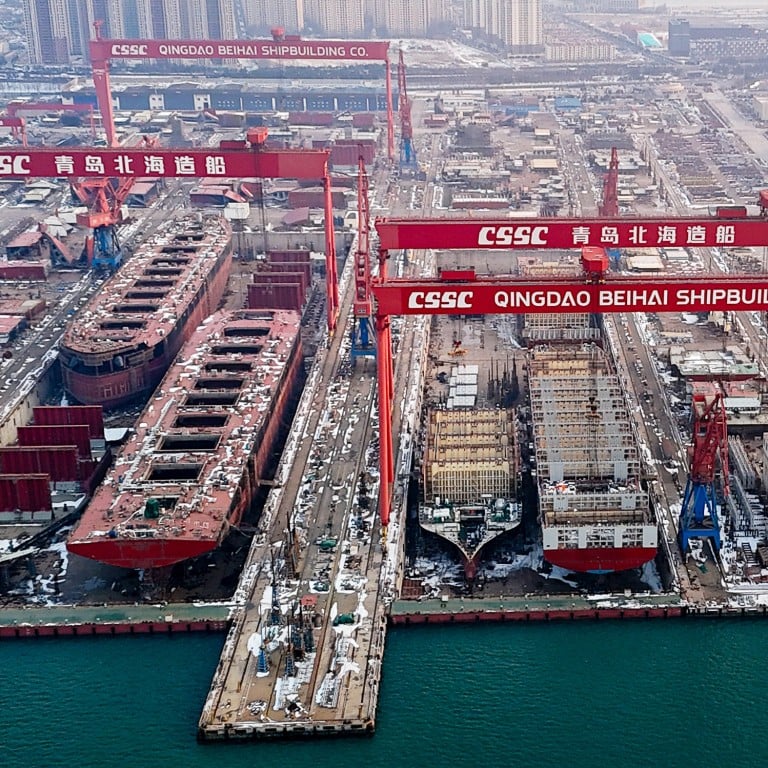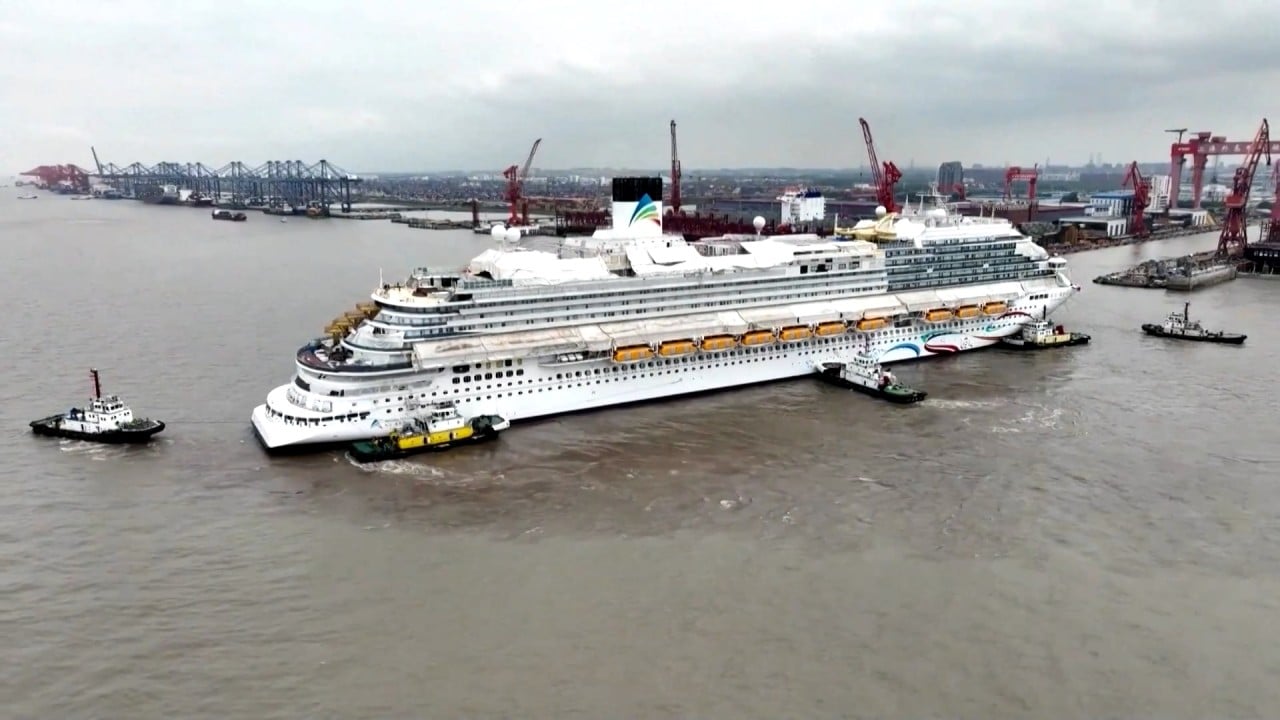
China’s shipbuilding industry ‘edge’ helps it thrive under US sanctions: study
- Despite the Trump-era restrictions, the sector achieved record growth last year with most supply chains resilient, researchers said
- But the report also called for weaknesses to be addressed in case further sanctions are imposed
Despite the sanctions, industry data showed record growth last year, with Chinese shipbuilding completions up nearly 12 per cent year on year to 42.32 million deadweight tonnes – more than every other country combined.
New orders were also up by 56 per cent, many for advanced ship types, such as the costly roll-on/roll-off vehicle transport ships, which accounted for 83 per cent of global new orders, data from the China Association of the National Shipbuilding Industry shows.
The research team, led by Liu Cungen, a professor at the School of Naval Architecture, Ocean and Civil Engineering at Shanghai Jiao Tong University, set out to investigate the resilience of China’s marine equipment industry chain against the sanctions.
Could China lose its lead in shipbuilding as West looks at industrial decoupling?
In a peer-reviewed paper published by the Chinese academic journal Marine Development and Management, the researchers said shipyards continue to have access to all but a small proportion of specialised equipment.
Although some Chinese products still have a gap in maturity compared to Western competitors, their technological level and market potential are growing rapidly, and their prices are attractive to customers, they said.
“The US approach of strategic competition has dealt a blow to the development of China’s marine equipment industry, with the maritime sector bearing the brunt of the impact,” the researchers wrote.
“During [Donald] Trump’s presidency, China was … branded as a strategic competitor, resulting in multiple hi-tech and military companies being targeted and posing significant challenges to the security of China’s marine equipment industry chain and supply chain.”
An accurate assessment of the current situation “is necessary for China to prepare for further self-defence and countermeasures” because the sanctions could escalate in the future, they said.
Liu’s team engaged in rigorous discussions and investigations with industry leaders to construct a map of the key segments of China’s shipbuilding sector, according to the paper.
Greener shipping: why China will drive the industry’s adoption of wind power
These included raw materials, research and development design, final assembly and construction, supporting facilities, navigation services, as well as operation and maintenance.
Based on their analysis, only two types of ships currently face relatively high supply chain risks – large liquefied natural gas carriers and luxury cruise liners, the researchers said.
Demand for LNG transport ships has surged since the Russian invasion of Ukraine. Europe, which previously relied on cheap supplies of natural gas from Russia, now needs to import the fuel from the US at high prices.
But LNG needs to be stored at extremely low temperatures and China is unable to manufacture five key components for the vessels – tank maintenance systems, marine cryogenic materials, cryogenic pumps and valves, the researchers found.
Shipyards are also struggling to find domestic suppliers of door lock systems, entertainment equipment, catering facilities and medical area accessories for luxury cruise ships, according to the study.
The researchers also noted that the shipbuilding industry is still relying entirely on imports for the propulsion system which is specifically designed for the luxury vessels.
Despite these difficulties, China remains the only country in the world capable of building all 18 major ship types – including LNG carriers and cruise ships – and ranks first globally in terms of order volume for 14 of them.
According to the China Association of the National Shipbuilding Industry, orders currently total 140 million tonnes – equivalent to the displacement of more than a thousand Ford-class aircraft carriers – all to be produced within the next three years.
Will new Chinese warship radar shift balance of naval power in world’s oceans?
China is building ships more than 200 times faster than the United States and the US Navy has warned that if the gap persists or widens it will be difficult for Western fleets to maintain their dominance in the global oceans.
Liu and his team confirmed that shipbuilding capacity is crucial to the growth of China’s national defence capabilities and said its rapid growth in the face of Western blockades related to China’s technological progress and complete industrial chain.
In terms of marine steel plates, anti-corrosion materials, infrastructure, production technology and ship repairs, Chinese suppliers can provide the best products and services in the world, the researchers noted.
“All the equipment required for final assembly and construction can be purchased in the Yangtze River Delta region alone, keeping both costs of logistics and storage low. This is an edge that other nations’ shipyards can only envy,” they said.
As South Korea clings to shipbuilding secrets, China must ‘turn somewhere else’
While US shipbuilding capacity is almost negligible next to China’s – accounting for just 0.2 per cent of the global total, China should not rest easy, according to the researchers.
Japan and South Korea remain strong competitors in the shipbuilding industry, while Europe continues to dominate some high-end supporting product markets, the paper noted.
The study recommended the formulation of countermeasures in advance of any move by the US to ask its allies to join in further sanctions against China, “breaking the international, especially European, monopoly on supporting industries”.
Did Chinese explorers travel to the Americas decades before Columbus?
Despite having the production capabilities, China continues to import large quantities of speciality steels, communication equipment and other components that could be affected by an expansion of the sanctions, the researchers said.
For much of history, China led the way in maritime technology and was the first to harness the power of the rudder. In the 15th century, Chinese explorer Zheng He’s had a 300-strong fleet of treasure ships, each over 100 metres (328 feet) long.
Some Chinese marine scientists and engineers believe that China will soon reclaim its historical dominance. For now, over 90 per cent of the world’s shipbuilding strength lies in Asia.


